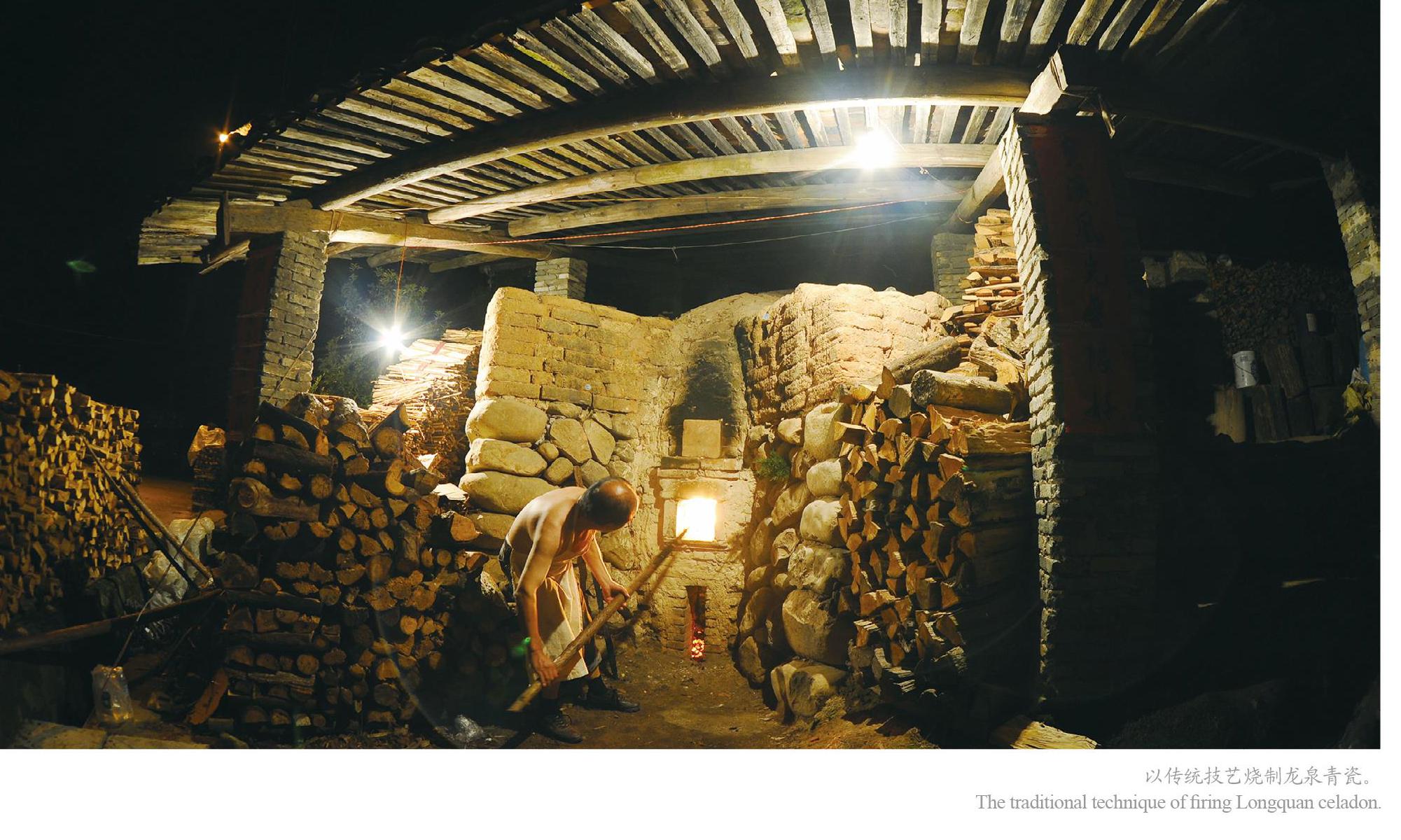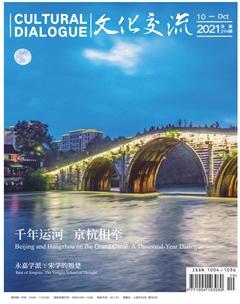龙泉青瓷:本真淳朴 温润凝神
刘凡力


龍泉窑始于西晋,北宋时已初具规模,至南宋中晚期进入鼎盛时期,制瓷技艺登峰造极。传统龙泉窑中的哥窑与官窑、汝窑、定窑、钧窑等并称为宋代五大名窑。
龙泉青瓷传统上分“哥窑”与“弟窑”。哥、弟窑之说来自明代记载:“宋处州龙泉县人章氏兄弟均善治瓷器。章生二所陶名章龙泉,又名弟窑。章生一之哥窑其兄也。”是否真有兄弟二人,已无可考,但说明了两种不同的龙泉青瓷产品:一种是白胎和朱砂胎青瓷,称“弟窑”或“龙泉窑”,另一种是釉面开片的黑胎青瓷,称“哥窑”。
“哥窑”出现于南宋中晚期,特点是“胎薄如纸,釉厚如玉,釉面布满纹片,紫口铁足,胎色灰黑”。“哥窑”以瑰丽、古朴的纹片为装饰手段,如冰裂纹、蟹爪纹、牛毛纹、流水纹、鱼子纹、膳血纹、百圾碎等,加之其釉层饱满、莹洁,与釉面纹片相映,更显古朴典雅。此类产品以造型、釉色及釉面开片取胜,因开片难以人为控制,裂纹无意而自然,天工造就,更符合自然朴实、古色古香的审美。
“弟窑”胎白釉青,釉色以粉青、梅子青为最,豆青次之,被誉为民窑之巨擘。弟窑青瓷釉层丰润,釉色青碧,光泽柔和,晶莹滋润,胜似翡翠。青翠的釉色,配以橙红底足或露胎图形,产生赏心悦目的视觉效果。南宋中晚期起,尤其是在元代,运用露胎的作品大量出现,人物塑像的脸、手、足等,盘类器物内底的云、龙、花卉等,装饰独具神韵。
现代的龙泉青瓷忠实地继承了中国传统的艺术风格,在继承和仿古的基础上更有新的突破,研究成功紫铜色釉、高温黑色釉、虎斑色釉、赫色釉、茶叶未色釉、乌金釉和天青釉等。观龙泉青瓷艺术,清纯洗练,温润凝神,既印证着大千自然的本真淳朴,又透溢出人文历史的情怀内涵,正所谓“空谷清音”“会意传神”。匠人们将自己的思想和情感融入青瓷烧造技艺之中,用心灵感悟中华五千年文明精华之所在。
(浙江省非物质文化遗产保护中心为本栏目提供支持)
Longquan Celadon: Elegant Simplicity
By Liu Fanli
First built in Western Jin dynasty (265-317), it was not until Northern Song dynasty (960-1127) that large-production of celadon in the kilns of Longquan in southwestern Zhejiang province began. In the middle and late Southern Song dynasty (1127-1279), porcelain-making reached its peak. Ge Kiln (of Longquan), Guan (Official) Kiln, Ru Kiln, Ding Kiln and Jun Kiln were known as the five most famous kilns of the Song. Longquan celadon is unique in terms of its raw material selection, glaze preparation, and molding and kiln temperature control, and the finished products have unique aesthetic value. And to a large extent, Longquan celadon is the microcosm of traditional Chinese culture, which is elegant, reserved, honest and quiet, and is the expression of Chinese classical aesthetic taste. In September 2009, the traditional technique of firing Longquan celadon was officially listed in UNESCOs Representative List of Intangible Cultural Heritage of Humanity.
Born in the town of Baoxi, Longquan city, Zhao Shaobing came from a long line of celadon-making masters. In fact, Zhang began practicing the skills of pottery and ceramic-making when he was very young. In 2003, Zhang was himself named a China Ceramic Art Master in 2003, one of the first group to win the title. Over the years, Zhang has conducted in-depth and systematic experimentation and research on the body glaze characteristics of Longquan celadon, which helped considerably improve its glaze color, and successfully recovered traditional celadon-making techniques such as thin body and thick glaze. He also succeeded in developing a new beige hue for the Ge kiln porcelain, which is another major glaze invention for the Longquan celadon. Indeed, thanks to his unremitting efforts, Zhang has been able to make a thin-body-thick glaze Ge kiln bowel whose diameter is larger than 40 centimeters, breaking away from the tradition that thin-body celadon with thick glaze cannot be made into large-piece ceramics. Zhangs celadon works include Asking the Heaven, A Bamboo Rain Hat on a Clear Day, The Golden Monkey Teasing the Turtle, among others.
The making of Longquan celadon is in itself an art, the appreciation of which is akin to a process of purification and spiritual cleansing. It not only testifies to the simplicity of nature, but also overflows with humanistic and historic significance. Those masters over the generations have already instilled their thoughts and feelings into the craft of celadon-making, and have touched the 5,000-year-old Chinese civilization with their souls.

